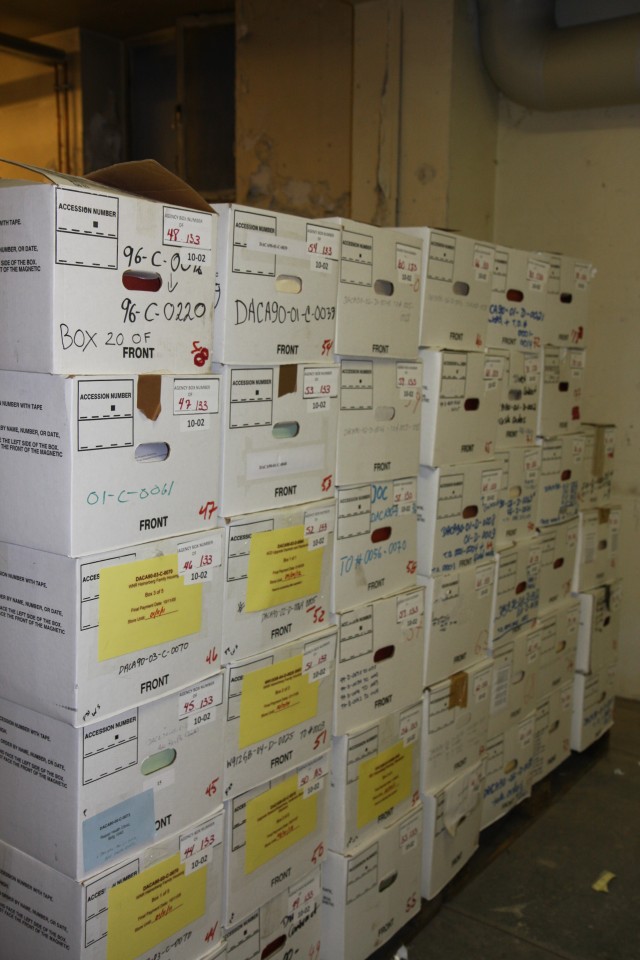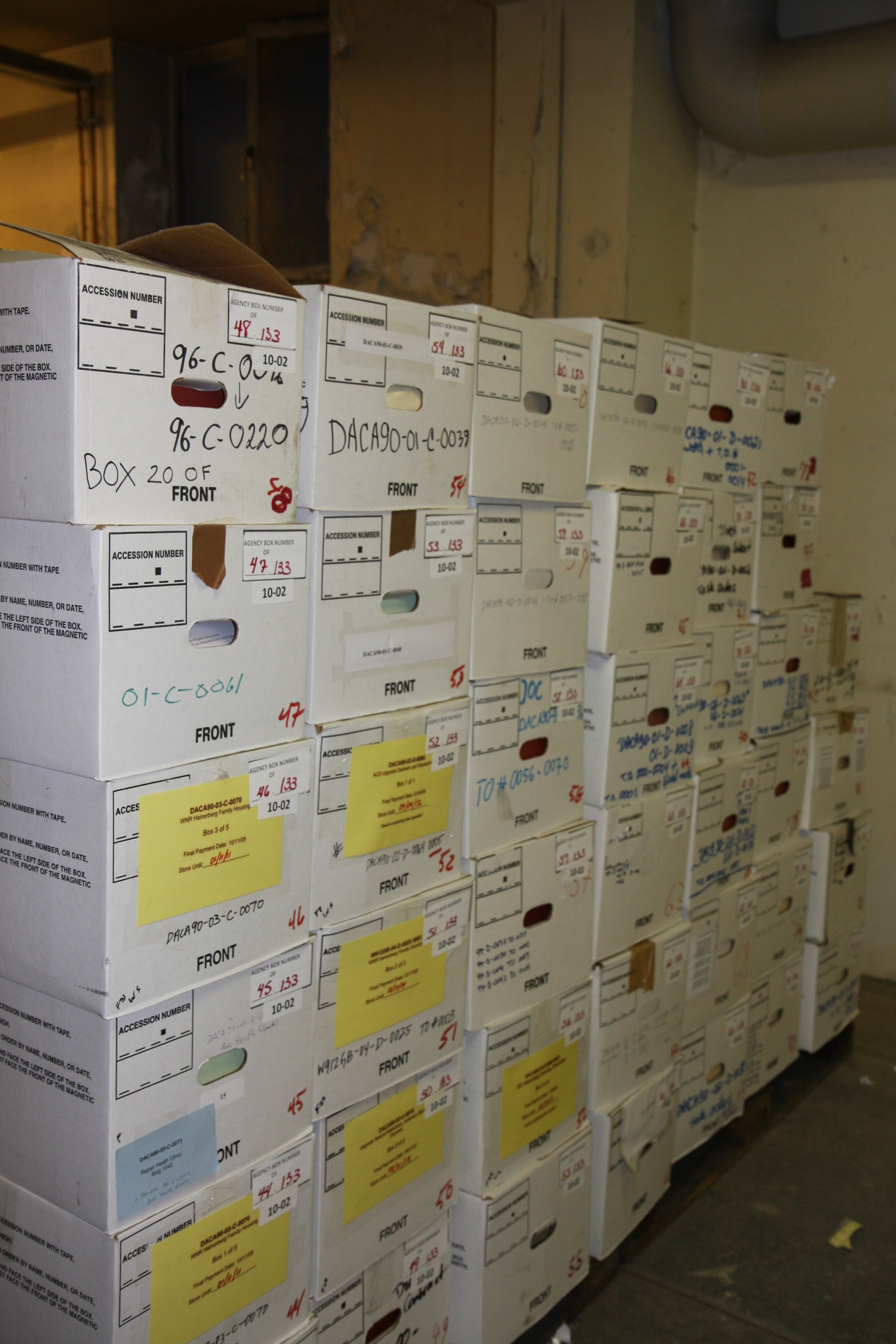
WIESBADEN, Germany - Since December 2008, the U.S. Army Corps of Engineers Europe District has processed more than 2,400 boxes of physical records, reduced network server clutter by 79 percent, and renovated roughly 3,400 square feet in the district's headquarters building to make room for a new records holding area.
"Last year at this time, we had two large basement rooms filled to the ceiling with no standardized form or method of tracking what was inside those boxes," said Ross Goodspeed, the district records manager. "In the past 12 months, we've developed a system where we can retrieve boxes quickly and can manage these important records accurately."
The effort is part of a district-wide initiative to revamp its records management, which it lacked for nearly 10 years. The goal, Goodspeed said, is to establish systems that allow for the efficient and legal management of all district records, including field sites, regardless of media throughout their life cycle.
"We can't approach the storage of information with, 'We need more space,'" he said. "We're not just talking about filing cabinets and overcrowded storage areas. In today's electronic age, it goes far beyond that. We're talking about server space, e-mail, back-up tapes - all of which have a cost associated. Space costs money."
But it's more than just a storage issue. The district has the responsibility of being able to find pertinent information when requested, Goodspeed said.
"Many people don't see the importance of the program until they need to go back to find documents for legal reasons - a scenario that is more common than people realize," he said. "Records management programs are developed to ensure we don't dispose of critical and historical information prematurely, as well as to make sure we don't keep information longer than we're legally required."
The effort began locally with headquarters offices. This year, the program is being pushed out to the field offices.
"Our offices are spread out across Europe and Israel with projects in even more places. Trying to make one standardized system and process when there are many existing is challenging," Goodspeed said. "That's why we're starting with the foundation laid out by the Army and adjusting as users provide feedback."
Goodspeed said he hopes to meet with all offices to provide the tools necessary for the program's success and have the entire district set up by the end of the year.
"We may not have every record where it's supposed to be by that time, but the system will be in place for offices to continue working until we get to the point when we're out with the old and in with the new - records that is," he said.
Another system working hand-in-hand with records management is the Projects and Acquisitions Portal, a centralized location for data and documents on projects from beginning to completion.
"Like the records management program, this program was implemented based on command directive to centralize documentation," said Bernice Hazelwood, the district's PnA portal manager. "This program is more focused on projects, but the goal is similar - to eliminate document duplications."
The PnA portal allows users to see every document related to their project, every edit made to that document, by who and when, and even allows users to compare documents. Right now, the portal is being used for pre-award and awards for direct contracts. Once that's ready, Hazelwood said the team will focus on indirect contracts.
"PnA has so many good things about it, but we can't make it a fully-functional, user-friendly tool without the users using it," she said. "We want to hear what the PMs have to say, any problems, feedback."
And feedback as well as support from leadership is critical to ensuring both the PnA portal and records management programs are successful.
"When any new program is put in place, there is bound to be push-back," Hazelwood said. "When people started using it [the PnA portal], they didn't like it, but now they love it and are trying to get others to use it."
When both programs are fully-functional, individual users won't see much of a change in their day-to-day operations with either program. The only difference is in terms of where a document is saved.
"Instead of saving project data to a network drive, users save it directly to the portal and to the specific project," Hazelwood said. "We are also in the process of getting the Army records management system to accept Sharepoint pages as records so once a project closes out, we can archive the entire site."
For all other documents, including those where wet signatures are needed, the user only needs to place or save a document to the correct folders, which have been set up by records coordinators, Goodspeed said.
"Employees generate historical and business data that creates a history of our transactions and our history as a district," he said. "We have a very important mission here. All the information in the world is great, but if you can't find anything, then what's the point?"
Although both programs still have a long road ahead, the framework is in place to help put information where it belongs.
"In an organization that has a high turnover rate due to limited tours, knowing where to find data is even more important," Hazelwood said. "And when someone new comes on board, it's important that they're able to start using the system immediately."

Social Sharing